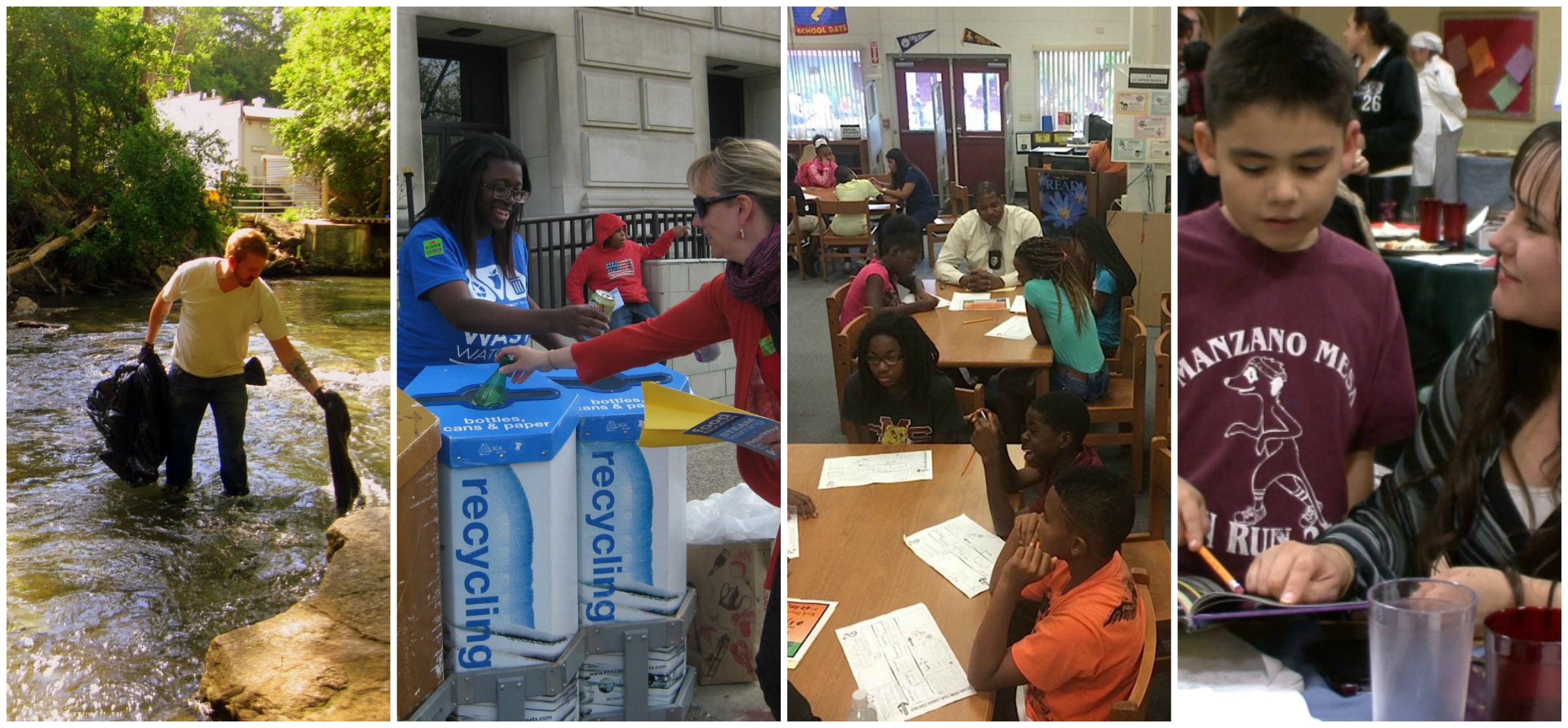Earlier last week, the National Conference on Citizenship (NCoC) released a report on volunteering and civic life in America in collaboration with the Corporation for National and Community Service and the U.S. Census Bureau. Promisingly, surveys of 100,000 subjects found that one in four American adults volunteer with an organization and nearly two-thirds engage in activities to help friends and neighbors. The report also provides statistics and rankings based on the numbers of volunteers in each state and many large and mid-size cities.
As an organization that supports the efforts of mayors and cities’ chief executives to engage citizens in impact volunteering – initiatives that move the needle on their most pressing challenges – we are thrilled to note that 40 of the 51 largest U.S. cities are members of the Cities of Service coalition, and are glad to see their work to engage volunteers recognized on a national scale. (See a full list of our members here.)
While numbers of volunteers are notable, and increased citizen engagement and activities like helping neighbors or donating to charities are encouraging for civic life, these indicators only scratch the surface of the health and success of a city’s volunteer efforts. City success stories show it’s less about headcount, and more about headway.
Last week, Cities of Service introduced four new blueprints– comprehensive, customizable, impact volunteering strategies that outline steps for cities to bring proven service initiatives to life. They are the work of mayors and city agencies who are committed to engaging citizen volunteers in partnership with nonprofits and community leaders. Their initiatives resulted in meaningful and measureable progress on priority issues from sustainability to youth and education. In applauding their success, we have made these plans available to other cities who can replicate their achievements. (Cities who join the coalition also receive technical assistance and professional support to help bring these and other service initiatives to fruition.)
Our winners were not ranked for the number of volunteers who enlist in efforts, but we recognize them – and provided cash prizes to further their programs – for what can be achieved when city-level, city led programs effectively leverage the goodwill and power of citizens. Among the great work on the ground:
- In Nashville, Mayor Karl Dean and his staff coordinated citywide restoration and resilience projects driven by community leaders and volunteers after the devastating flood of May 2010. Since then, volunteers have planted more than 7,300 trees and 60 rain gardens across Nashville, mitigating well over 2.5 million gallons of stormwater. Thousands of volunteers continue to restore Nashville’s vast number of waterways – they have assessed more than 200 miles of waterways and cleaned 30 miles, removing nearly 300 tons of trash and debris. Nashville’s blueprint is called Storm Busters.
- In Albuquerque, Mayor Richard Berry’s Homework Diner brings together students, parents and caregivers with school staff and neighbors to receive weekly tutoring and homework assistance followed by a nutritious meal prepared by volunteers from the local community college’s culinary school. In the first year of the program, 100% of participating teachers reported an increase in homework completed and 95% reported an increase in students’ academic performance in the classroom. With help from Cities of Service, Albuquerque is expanding the program to several more schools next year.
- In Orlando, Mayor Buddy Dyer’s office engages volunteers from local businesses and the neighboring community to coach middle school students in personal development, and academic and career planning. Among participating students, outcomes have included no reported incidences of juvenile crime, improved grades and better school attendance. Eighty-eight percent of students reported an increased desire to graduate from high school. Orlando’s blueprint is aptly named Path Finders.
- In Philadelphia, Mayor Michael Nutter’s Waste Watchers sustainability initiative resulted in robust recruitment and training of volunteers to help attendees and spectators at major public events separate waste into trash, recycling, and compost receptacles. Their efforts achieved an 87.5% waste diversion rate at the 2012 Philadelphia Marathon, and because of its success, Waste Watchers is now an integral part of other major events in the city.
The benefits to cities are far beyond the mere numbers of volunteers. Positive work in our communities is amplified with effective strategy and long-term changes in the way the city partners with volunteers — the things mayors focus on, measure, and benchmark with other leaders for future success. We’ve seen how the true value of volunteering and civic-mindedness in America is not about headcount, but about leveraging the work of dedicated citizens with innovative ideas from civic leaders to improve lives and make headway on the issues of our time.
I’m thrilled to champion successes in impact volunteering, but more motivated every day to create these opportunities. It’s what Cities of Service thrives on, and we support more than 200 cities and mayors in the U.S. and the U.K. to not only recognize the volume of willing volunteers but to ensure they are committed to engaging them in important work – work that moves the needle, no matter where they fall on a list.





Leave a Reply
You must be logged in to post a comment.